How to Aggregate Multiple Calendars Into One | Updated for 2026
Table of Contents
Ready to Aggregate Your Calendars?
Create a OneCal account to aggregate all your calendars into one, create and share Scheduling Links, view all calendars in one view, and more.
Managing multiple calendars can be a pain, especially if you have a busy schedule. It can be difficult to keep track of all your appointments and events, and it's easy to forget something important. But what if there were a way to aggregate all your calendars into one place?
In this article, we'll show you how to aggregate multiple calendars into one, using a variety of different methods. We'll also discuss the benefits of aggregating your calendars and why it's such a great way to improve your time management skills.
What is the best way to aggregate multiple calendars into one
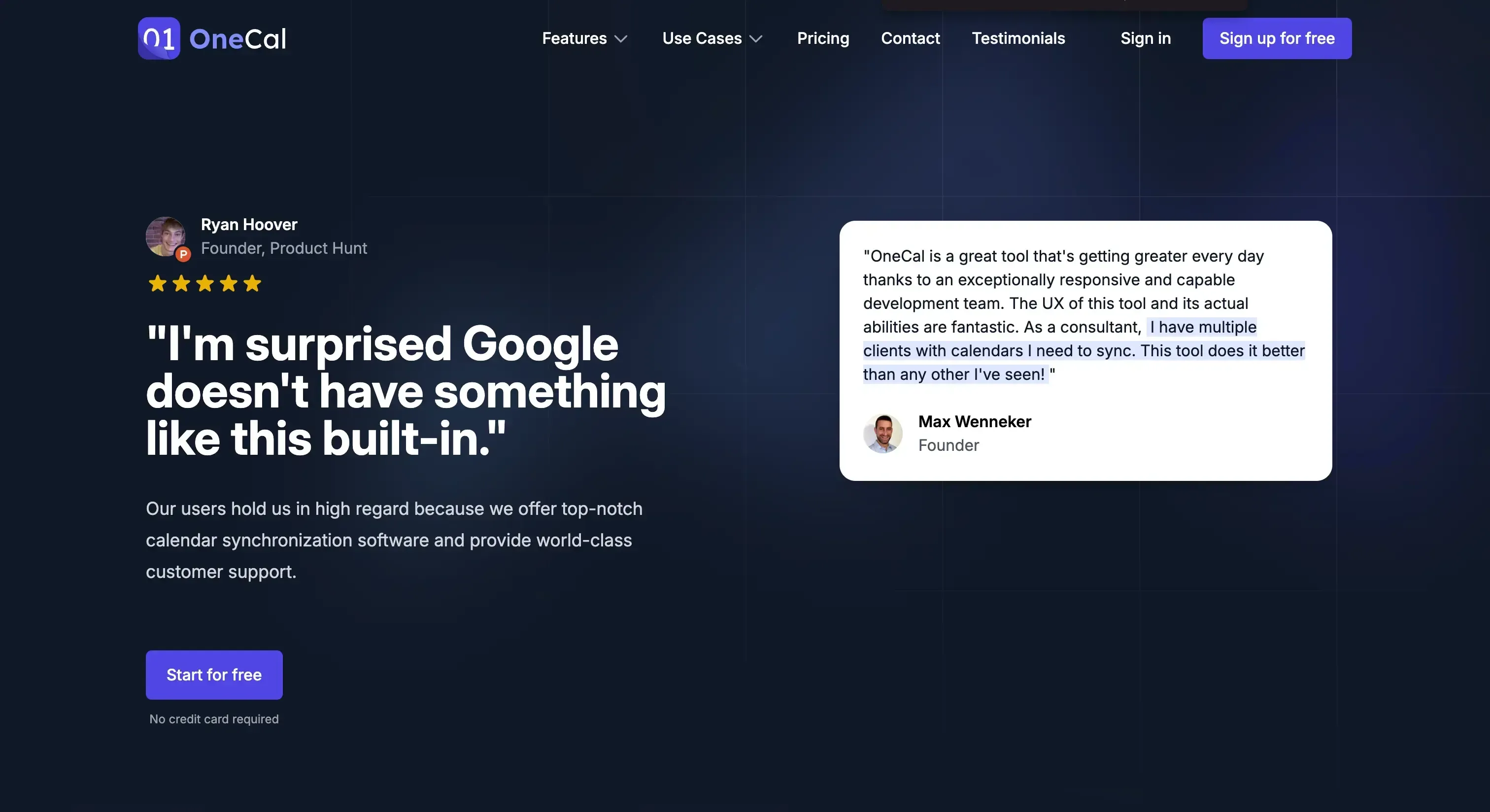
OneCal is the simplest and most reliable way to combine multiple calendars into one. It can aggregate multiple Outlook and Google Calendars in under a minute, and the calendars stay in sync in real-time. This means that any new meetings or events you create in one calendar will be automatically updated in your target calendar.
How to automatically aggregate multiple calendars into one using OneCal
OneCal is a calendar sync tool that integrates with Google Calendar, Outlook, and iCloud Calendar and enables users to reliably sync them in real time.
The illustration below shows how to use OneCal to aggregate multiple calendars into one:
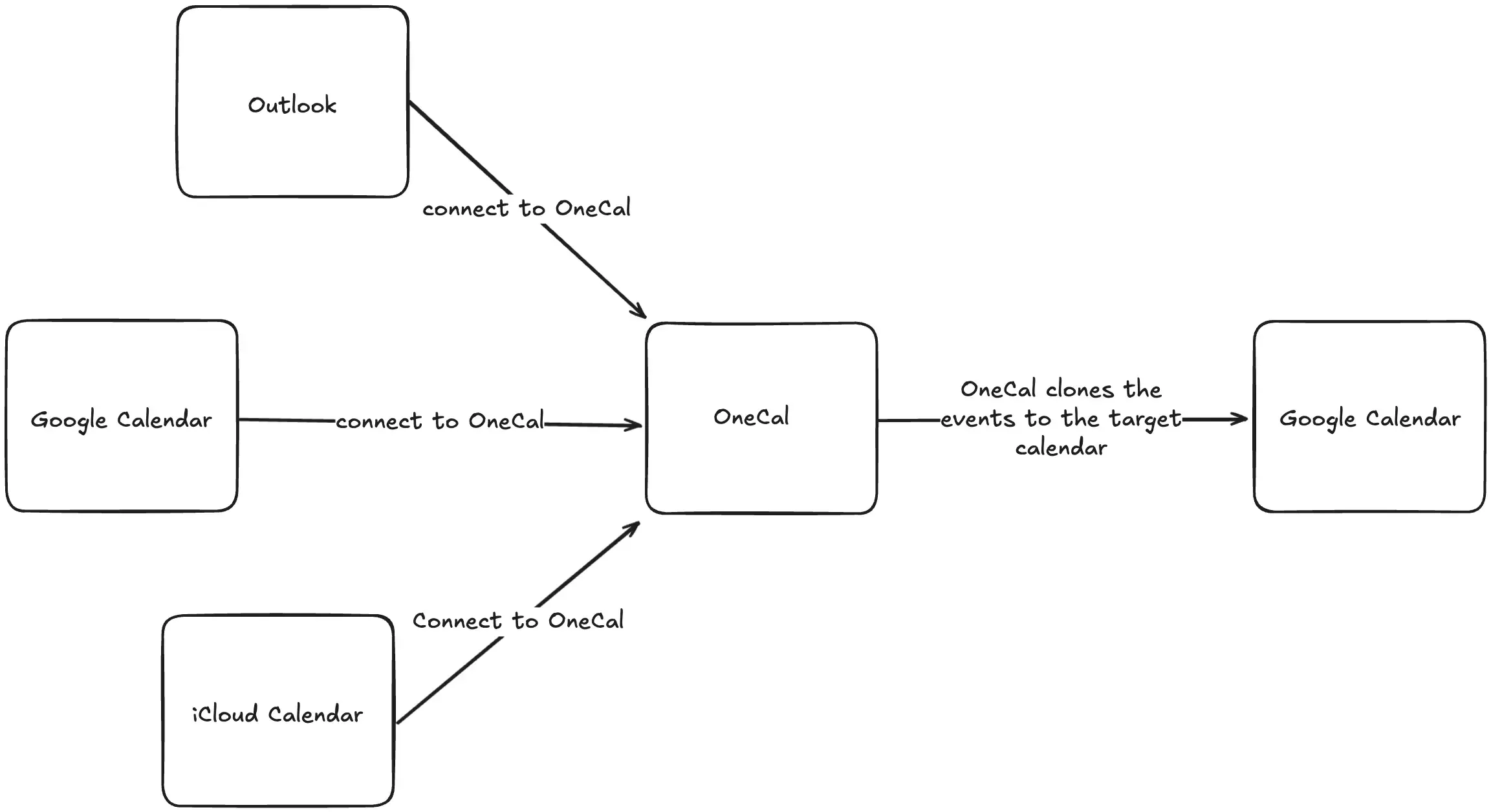
Now, let's follow the practical step-by-step guide to aggregate multiple calendars into one:
Connect your Calendars. The first step is to connect all the calendars you want to aggregate. You can connect multiple iCloud, Google Calendars, or Outlook Calendars.
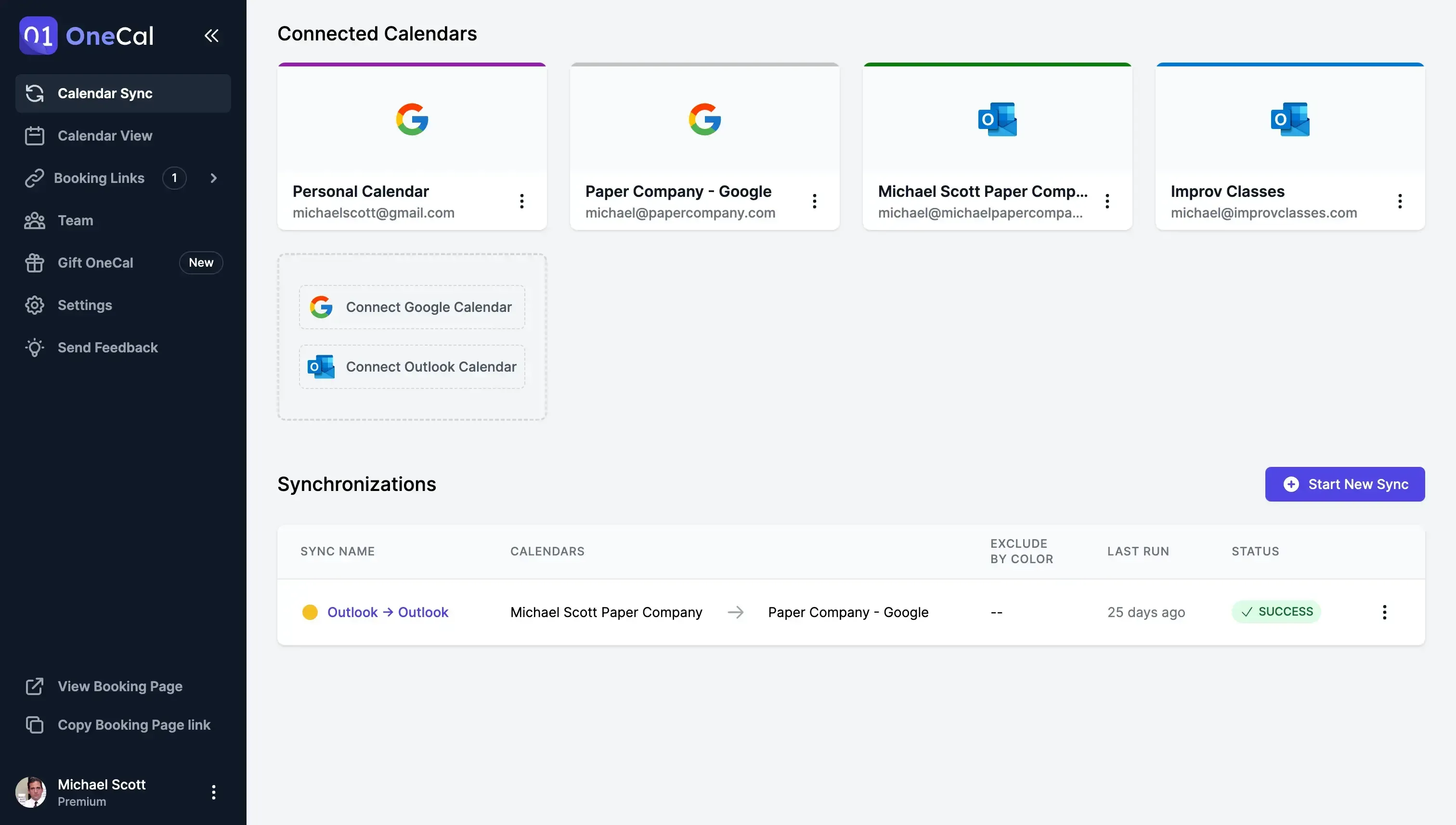
Choose one-way as the sync direction. With OneCal, you can aggregate one calendar into another or multiple calendars at the same time. To aggregate multiple calendars into one, choose one way.
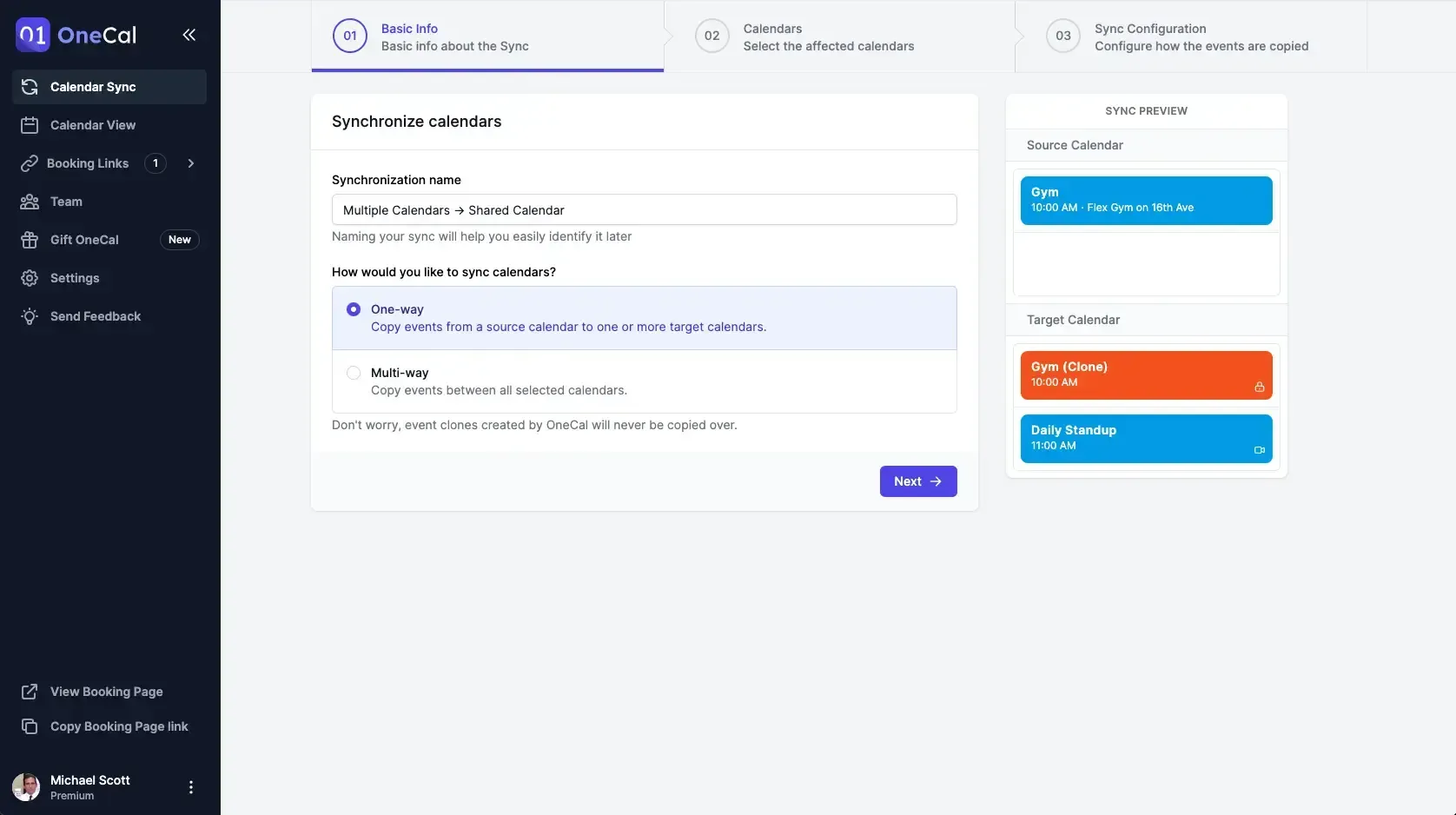
Choose the source calendar and the calendar you want to aggregate it to. The third step is to choose which calendar you are going to aggregate, and the target calendar you’ll aggregate it to.
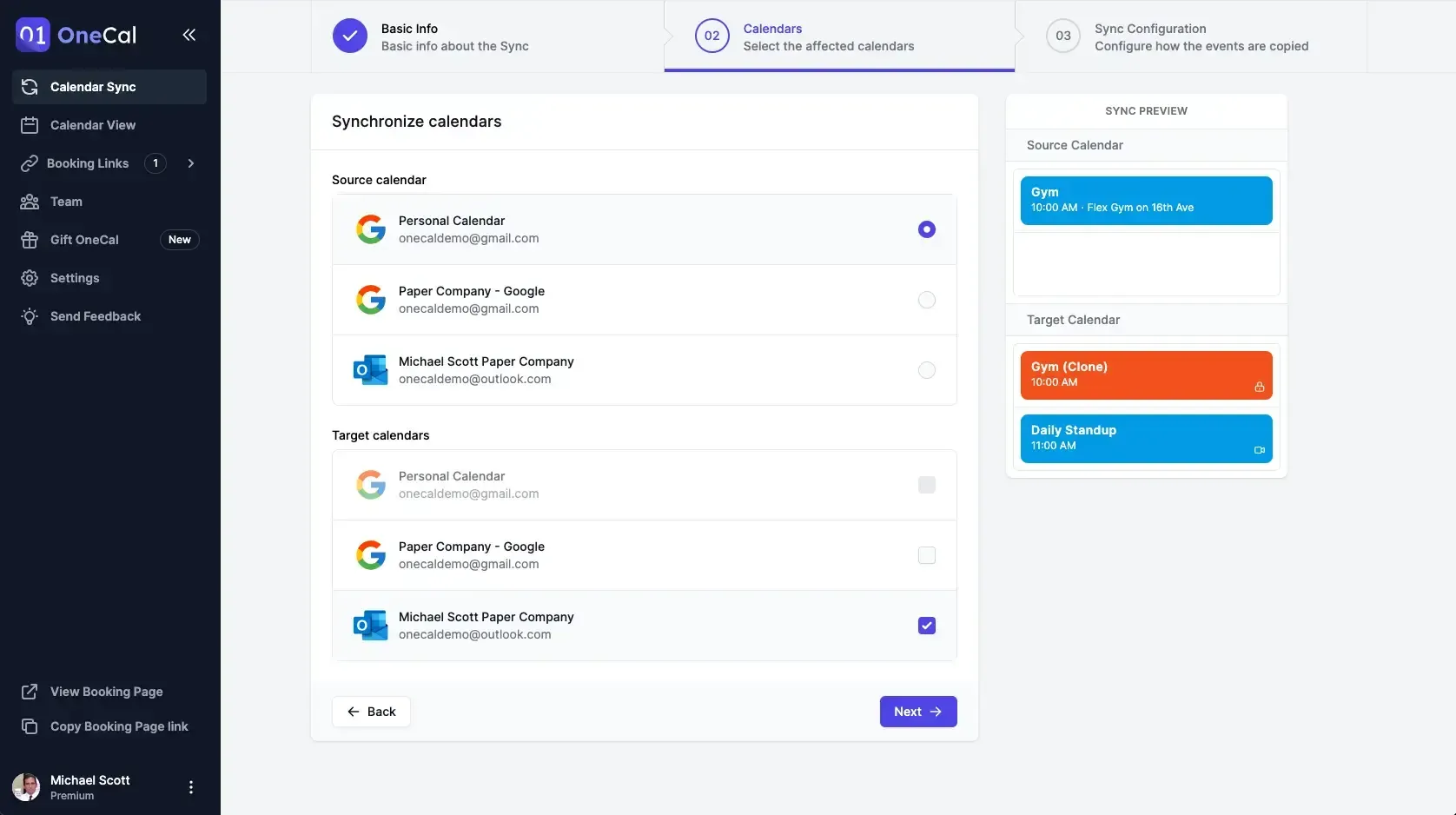
Configure how events are reflected across your calendars. To protect your privacy when aggregating multiple calendars into one, it is important to be selective about which information you share. One option is to only sync a generic placeholder title, such as "Busy." This will ensure that you reserve the time as busy in all your work calendars, without disclosing any confidential information.
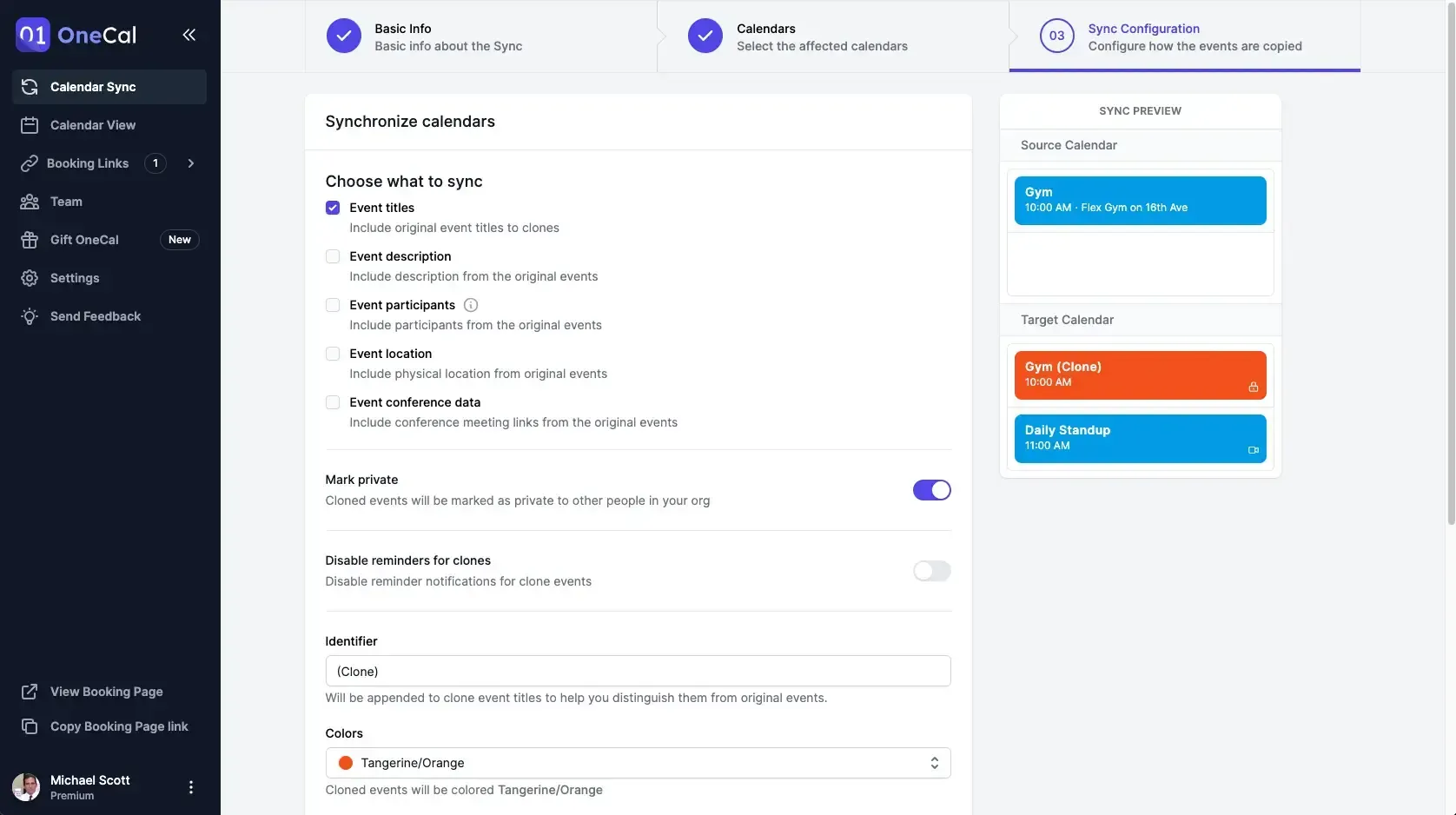
Your calendars are aggregated into one!
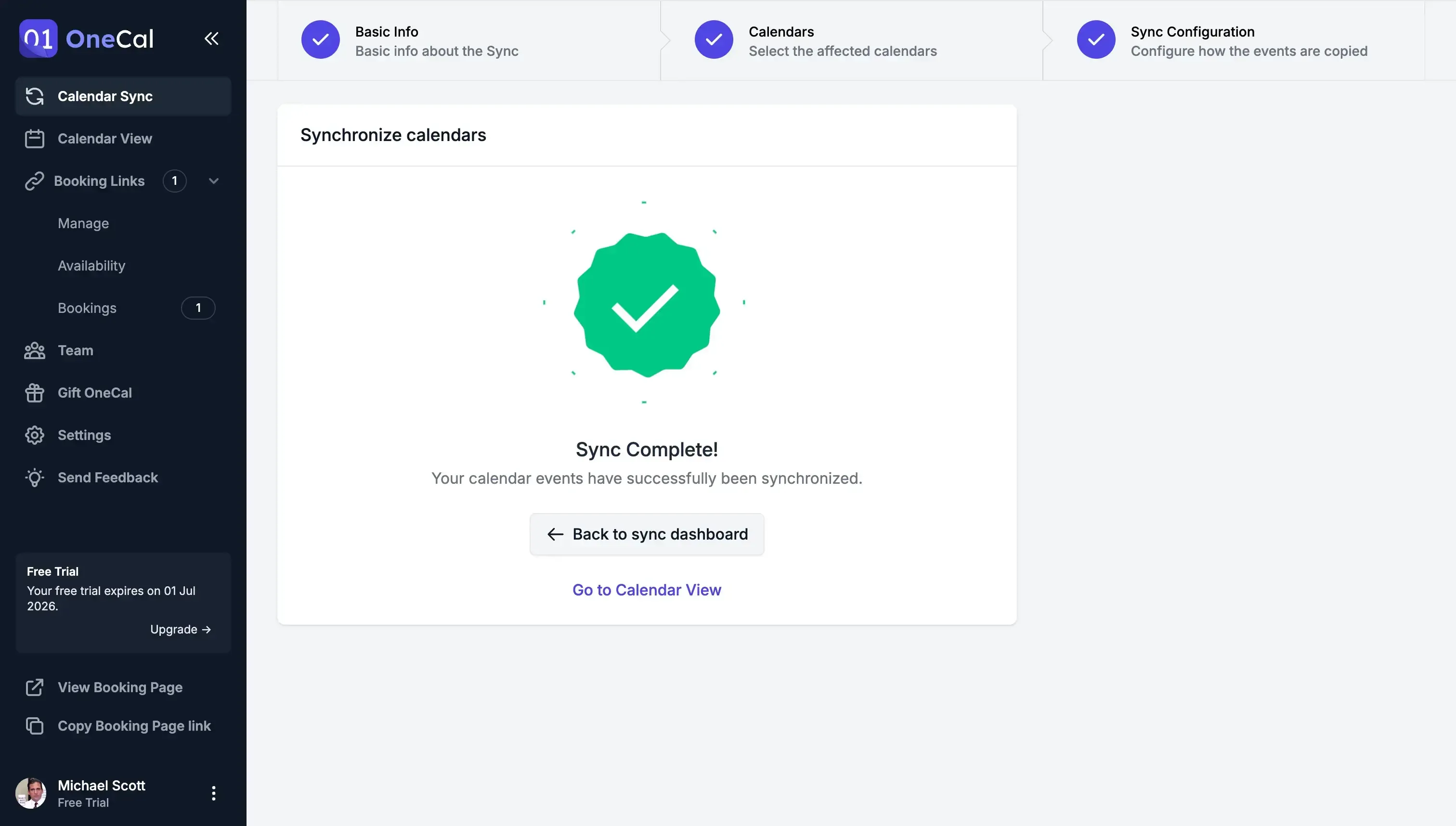
The selected source calendar is aggregated into the target calendar. OneCal will keep the aggregation updated in real-time.
To aggregate more calendars into the target calendar, please follow the same process again.
For example, if you want to aggregate 4 calendars (A, B, C, D) into one (calendar E), you have to follow these steps:
Create a sync with source A and target calendar E
Create a sync with source B and target calendar E
Create a sync with source C and target calendar E
Create a sync with source D and target calendar E
Try OneCal for free for 14 days to see how it can help you aggregate multiple calendars into one, avoid double meetings and confusion, and streamline your schedule. No credit card is required.
Benefits of Using OneCal to Aggregate Multiple Calendars Into One
Dependable, automatic calendar aggregation: OneCal aggregates your time across all your calendars in real time, so you can avoid scheduling conflicts.
Calendar aggregation with privacy in mind: You can choose which information to aggregate across multiple calendars, so you can keep your private life private. Workspace administrators will not have access to view events or calendar specifics synced by One
Effortless setup: OneCal is easy to set up and use, so you can start saving time and stress right away.
How to Manually Aggregate Multiple Calendars Into One
Calendar sharing is another way to aggregate multiple calendars into one. The downfall of this method is that you’ll have to repeat a long process for each calendar (usually 13 steps to aggregate one calendar to another). Let's say you want to aggregate 4 calendars into one. Let’s name the calendars A, B, C, D, and Target. The process would be:
Export calendar A, and import it into the Target Calendar
Export calendar B, and import it into the Target Calendar
Export calendar C, and import it into the Target Calendar
Export calendar D, and import it into the Target Calendar
The biggest downfall is that updates don’t happen in real-time. If a meeting is created into calendar A, you’ll have to wait up to 24 hours for the meeting to be reflected in the Target calendar.
Furthermore, if team members want to meet with you on the aggregated calendar, they won't be able to see any of the meetings from the calendars you just aggregated, as providers only check for busy slots on primary calendars, not imported calendars.
Let’s break down how to auto-block time across two calendars, by provider:
Aggregate an Outlook Calendar with a Google Calendar
If you want to aggregate an Outlook Calendar to a Google Calendar, you have to export the Outlook Calendar and import it to Google Calendar, in a 13-step process. Note that you have to repeat the same process for each pair of calendars. To learn how to do this right, check out this step-by-step guide we wrote on How To Sync Outlook Calendar with Google Calendar.
Aggregate a Google Calendar to an Outlook Calendar
If you want to aggregate a Google Calendar to an Outlook Calendar, you have to export the Google Calendar and import it into Outlook Calendar, by following an 8-step process. Note that you have to repeat the same process for each pair. Here is a detailed step-by-step guide we wrote on How To Sync Google Calendar With Outlook.
Aggregate Multiple Google Calendars
If you want to aggregate multiple Google Calendars into one, you have to share them one by one and import them into each Google Calendar. Please visit How to Sync Multiple Google Calendars for a full overview of the process.
Aggregate Multiple Outlook Calendars
If you want to aggregate multiple Outlook Calendars, you have to share them one by one and import them into each Outlook Calendar. You can check out this detailed step-by-step guide we wrote on How to Sync Multiple Outlook Calendars.
Google Calendar is quite versatile, as it allows you to also share the Google Calendar with specific people, or with other calendars besides Google Calendar.
Drawbacks of Manually Aggregating Multiple Calendars Into One
Meeting conflicts: If your team uses the "Find a Time" feature in your target calendars to schedule meetings, they will only be able to see events in your primary calendar. This can lead to scheduling conflicts that span across multiple calendars.
Privacy concerns: Aggregating multiple calendars into one via sharing offers limited privacy controls. You will need to decide whether to make all events public or private. This may be a concern for workspace administrators, who could potentially access event information and details from the imported calendars.
Unreliable aggregation: When aggregating from a Google Calendar to an Outlook Calendar through sharing, it can take 24 hours or more for new changes to be reflected. Often, these changes do not synchronize correctly, which can increase the risk of double bookings and cause confusion among team members.
Complicated setup: You can only aggregate one calendar to another. Since syncing is done through sharing, this means that if you have multiple calendars, you will need to repeat the same process for each pair. This can be redundant and time-consuming.
Aggregate multiple calendars into one using OneCal
OneCal is the easiest and most secure way to aggregate multiple calendars into one. You can aggregate multiple calendars into one in less than one minute.
Sign up for a 14-day free trial to aggregate multiple calendars into one, save time, and focus on what matters.
FAQ
What is the simplest way to aggregate multiple calendars into one?
Using OneCal. OneCal integrates with Google, Outlook, and iCloud calendars and keeps them synced in real-time.
Can I keep event details private while aggregating calendars?
Yes. Using OneCal, you can choose to sync titles, descriptions, and locations with a generic label like “Busy” so sensitive info stays hidden.
Why is manual calendar aggregation not a good alternative?
Because setting the aggregation takes too much time, refreshes can take up to 24 hours, and new events may cause double bookings.
Does OneCal update aggregated calendars in real time?
Yes. Changes made in any connected calendar appear in the target calendar almost instantly.
Does OneCal support recurring events when aggregating calendars?
Yes, OneCal has support for recurring events, as well as event exceptions/cancellations in series.
How secure is my data when using OneCal?
OneCal is approved by Microsoft and Google, uses encrypted OAuth connections and never stores event information, keeping private details safe. Please visit the OneCal Data Security Page for more.